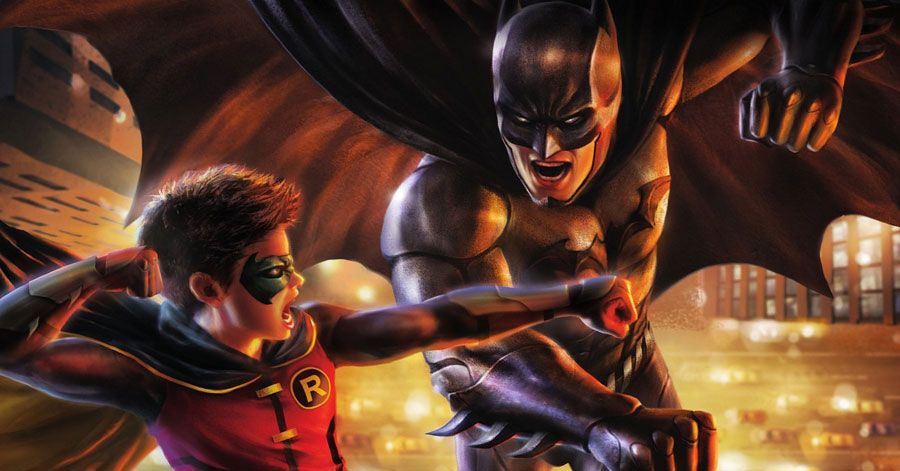Writer J.M. DeMatteis, producer James Tucker and character designer Phil Bourassa spoke with CBR TV's Jonah Weiland from WonderCon 2015 in Anaheim, CA about the latest DC Animated feature, "Batman vs. Robin." While loosely based on elements from the"Court of Owls" storyline in Scott Snyder & Greg Capullo's "Batman" run, the filmmakers spoke about building their own story in the animated continuity based on elements from that story and other Batman tales. Based on Damian Wayne's introduction in the previous feature, "Son of Batman," Tucker explained that it was more interesting to follow that thread and see how it shapes Batman and his world instead of just a straight adaptation of "Court of Owls."
RELATED: "Batman Vs. Robin" Cast Talks with CBR About Voice Acting Vs. Fight Grunting
Bourassa also talks about his approach to character design, including when he stays close to the comic book source material and when he needs to make changes to better suit the story at hand. He also discusses his many collaborations with Tucker, who has a design background himself, and how teamwork factors into every animated project at DC and across the industry.
"With 'Son of Batman' we set up Damian and we knew going in that we really liked that character," said Tucker. "We wanted to bring something different to Batman. And with Damian, he's the most interesting character, I think, in the last 20 years of Batman. He really brings something else out in Batman. And for me as a producer -- what could I bring to these movies that hasn't been done. Having Batman have a son is a through line that I think would work for a lot of different movies. And we liked 'Court of Owls.' We liked them as a villain. Not necessarily wanting to adapt that story, because that story was very much a singular Batman story. It affected some of the other characters but it was ultimately just about Batman. We thought, this could be something where we could use the Court of Owls to further deepen Batman and Damian's relationship; use the Court of Owls to Damian to pull him to the dark side.
"A lot of our movies have overlap, and sometimes I can't get to the rough storyboard handout before finishing the previous film. In those cases it's great to have a producer like James who can draw and has done design for a large part of his career. Especially when he has specific ideas," Bourassa said of the collaborative nature of animation. "Sometimes I get stuck, or I won't find it. A lot of times I know exactly what I want to do and we're almost always on the same page with that stuff, but then there are times when I'm having a hard time adapting this character or, I hate to say it, but sometimes -- not in the case of this film -- but sometimes the design of the look of the character from the comic books is not good and we can't use it. Those are trickier. When there's a strong fundamental design to build off, you know intutitively what you have to do to bring it into the medium of animation, and then we can add flourishes. But occasionally we run into stuff where the theme of the character, the name and the powers and the look, they're just incongruous. Those are the harder characters to design and those are the ones we tend to work more closely on.
"So much of what we do is problem solving," said Tucker. "There's not one person making any animated shows out there (that anyone's watching). It's a team effort."

